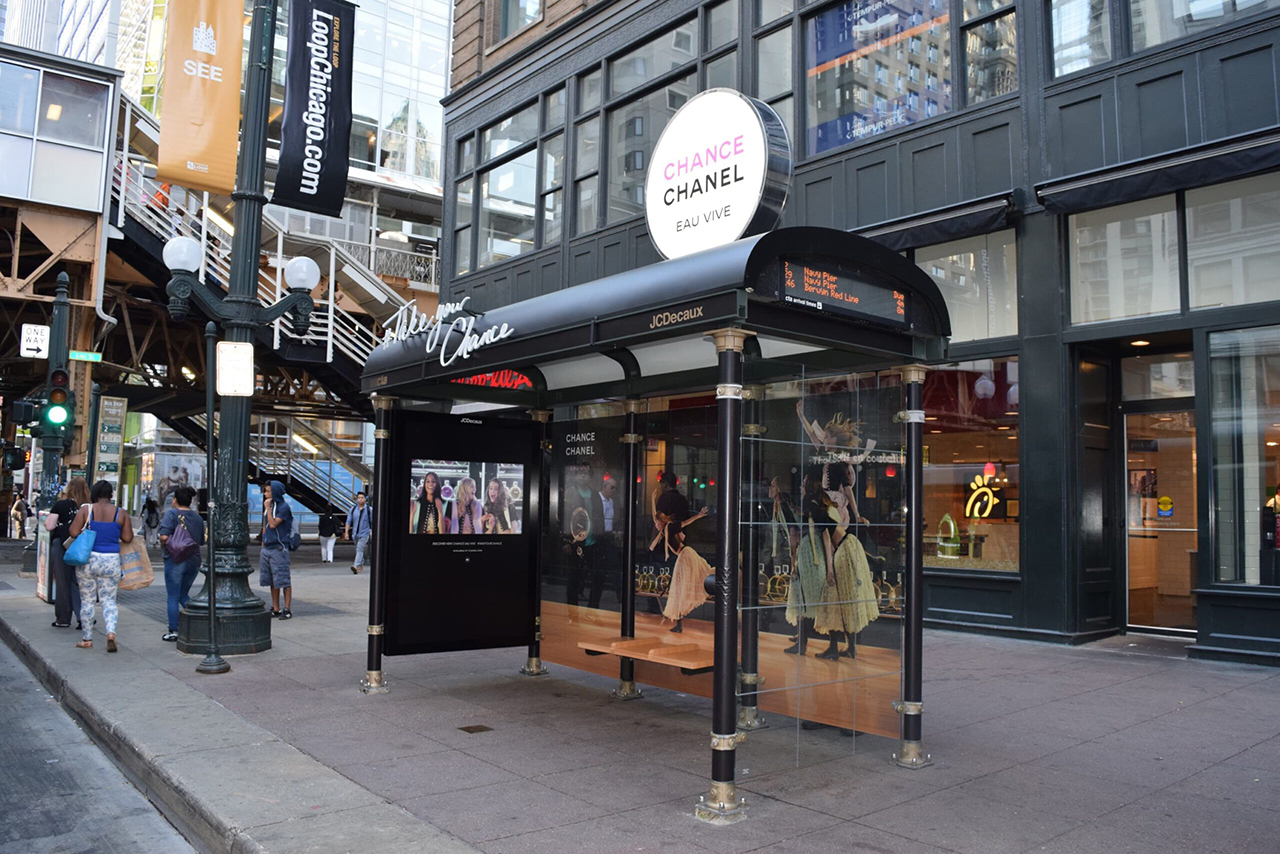In the changing world of urban marketing, street furniture has become a way to connect brands and city residents. These everyday objects, like bus shelters and benches, are more than functional. They now serve to create memorable brand experiences in cities.
What Is Street Furniture Advertising?
Street furniture includes all out-of-home advertising media located on the street level. These placements ensure maximum attention from pedestrians and commuters alike, making them ideal for creating impactful brand experiences in high-traffic areas.
Street furniture advertising has undergone a remarkable transformation over the past decade. What was once a poster on a bus stop has evolved into an interactive, immersive platform that engages multiple senses and creates real connections with audiences.
Today’s urban environments are increasingly designed with both functionality and advertising in mind. Cities are partnering with brands to create street media that enhances public spaces while providing valuable advertising real estate.
Types of Street Furniture Transforming Urban Environments
The diversity of street furniture allows brands to tailor their message and OOH media approach to specific audiences and locations:
Information Kiosks and Interactive Panels
Digital information kiosks and interactive panels offer some of the most sophisticated opportunities for experiential marketing. These installations can feature touchscreens, motion sensors, facial recognition technology, and mobile integration to create truly interactive brand experiences.
Financial institutions have utilized these kiosks to provide financial literacy information, while entertainment brands have created mini-games and photo opportunities that encourage social sharing and extended engagement.
Park Benches and Public Seating
Park benches and public seating areas represent prime real estate for creative brand messaging. Beyond simple signage, brands are reimagining the entire seating experience to reflect their identity and values.
One of the most iconic examples is KitKat’s brilliant bench campaign, where park benches were designed to resemble their chocolate bars with the message “Have a break, have a KitKat” embossed on them. This clever street furniture implementation perfectly aligned with the brand’s positioning and created a delightful moment of recognition for pedestrians.
Bike Racks and Charging Stations
As urban centers embrace sustainability and technology, bike sharing racks and device charging stations have become valuable touchpoints for brand communication. Forward-thinking companies are sponsoring these amenities while incorporating subtle but effective brand messaging that aligns with urban convenience and modern lifestyles.
Bus Shelters and Transit Stations
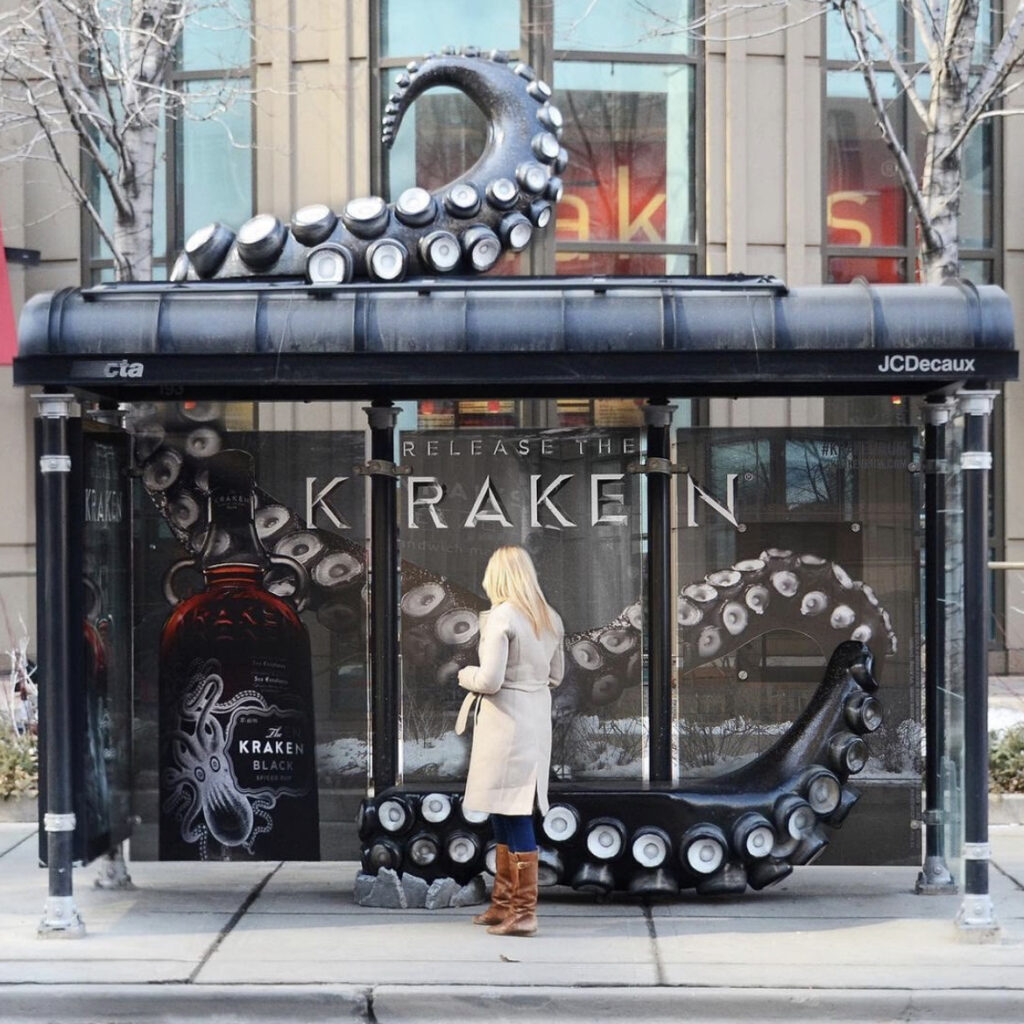
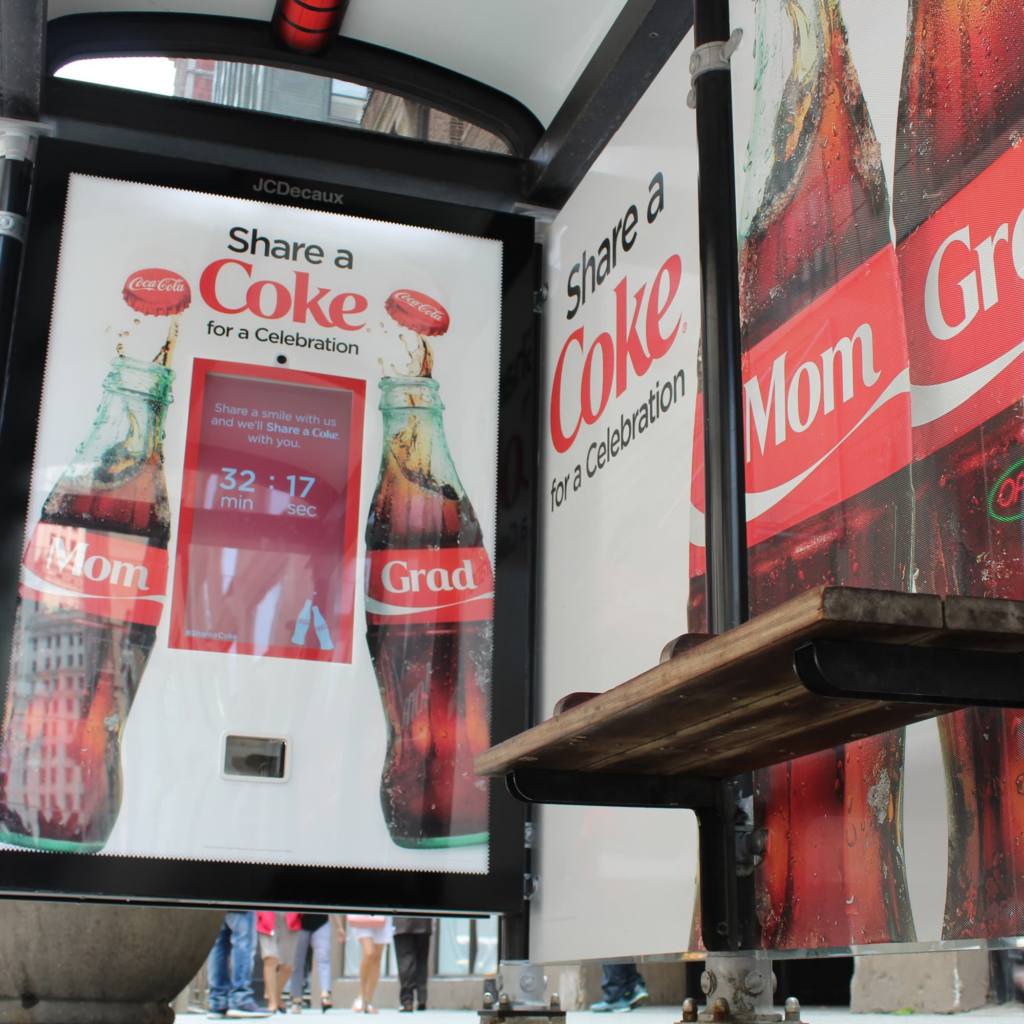
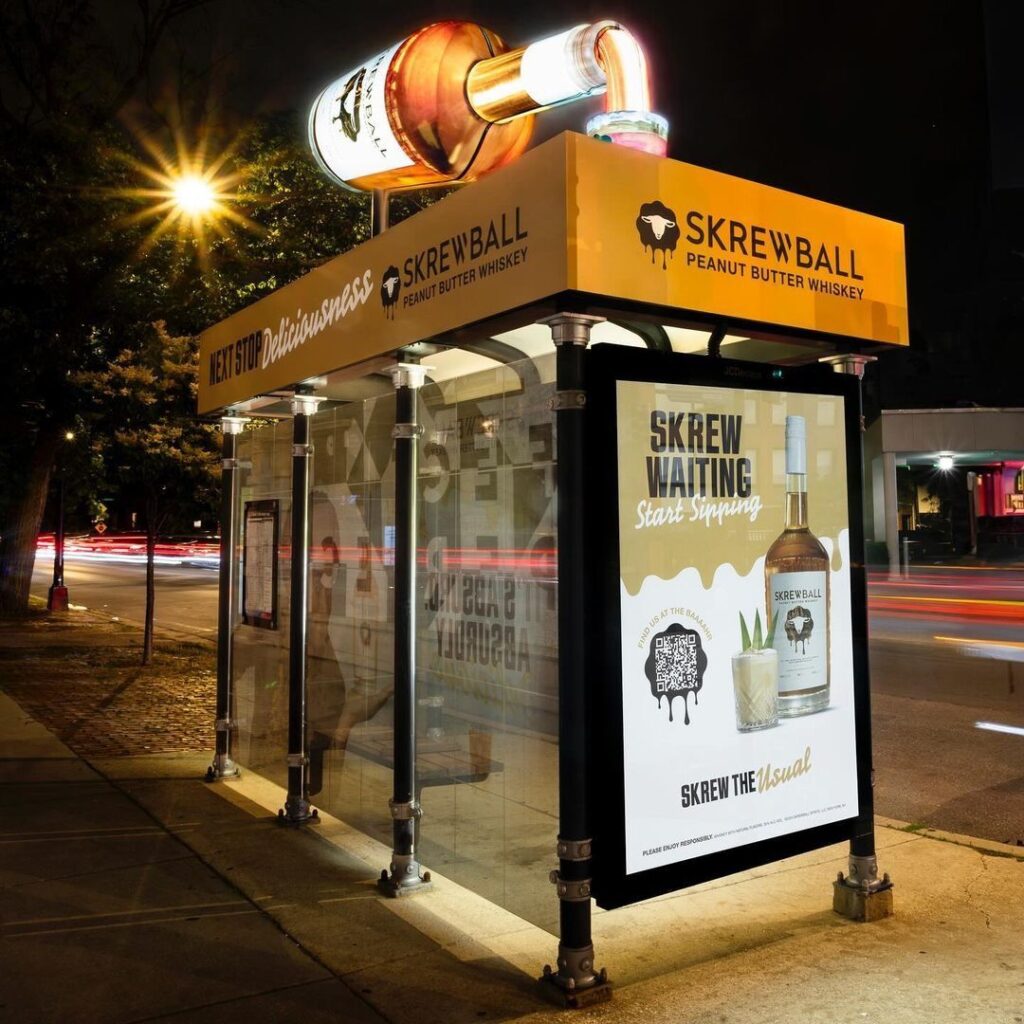
Perhaps the most recognizable form of street furniture advertising, bus shelters offer brands a captive audience with extended attention spans. Bus shelter advertising campaigns can incorporate digital displays, interactive elements, and even sensory features like scent or sound to create immersive brand activations.
Innovative brands have transformed standard shelters into memorable experiences—think heated benches in winter, cooling stations in summer, or shelters designed to look like living rooms or product showcases.
Street Furniture in Action: NPARALLEL + Atomic Props Case Studies
Understanding the transformative power of street furniture becomes clearer when examining real-world applications. Here are some examples of how innovative brands have partnered with NPARALLEL + Atomic Props to create memorable urban experiences:
Interactive Technology Transforms Transit Shelters
HBO’s Watchmen campaign demonstrates how augmented reality can turn ordinary bus shelters into extraordinary brand experiences. Transit shelters in New York and Los Angeles were equipped with custom-coded AR technology that made it appear as if squids were raining onto city streets—a key plot element from the show.
This installation used cameras to capture the cityscape and recreate the 3D environment, allowing the AR program to calculate realistic physics as virtual squids interacted with real people and vehicles passing by. The Los Angeles location even included alarm sounds triggered at the beginning of the “squid storm,” creating a multi-sensory experience for commuters.
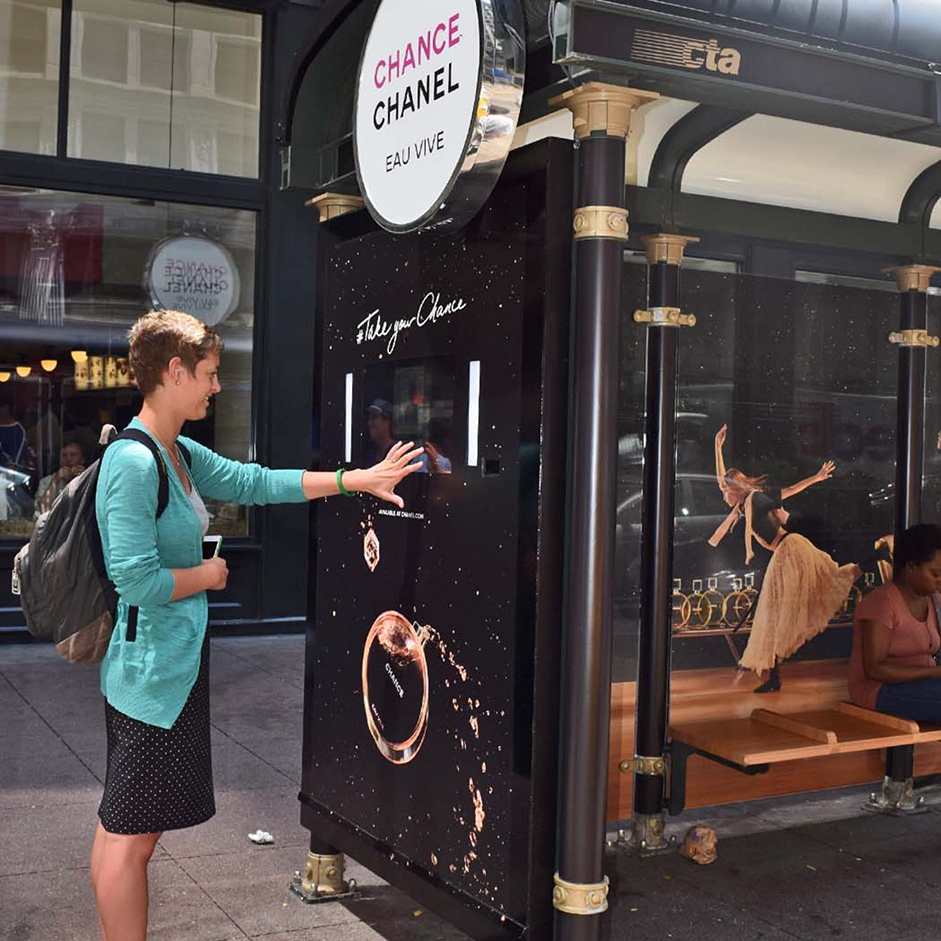
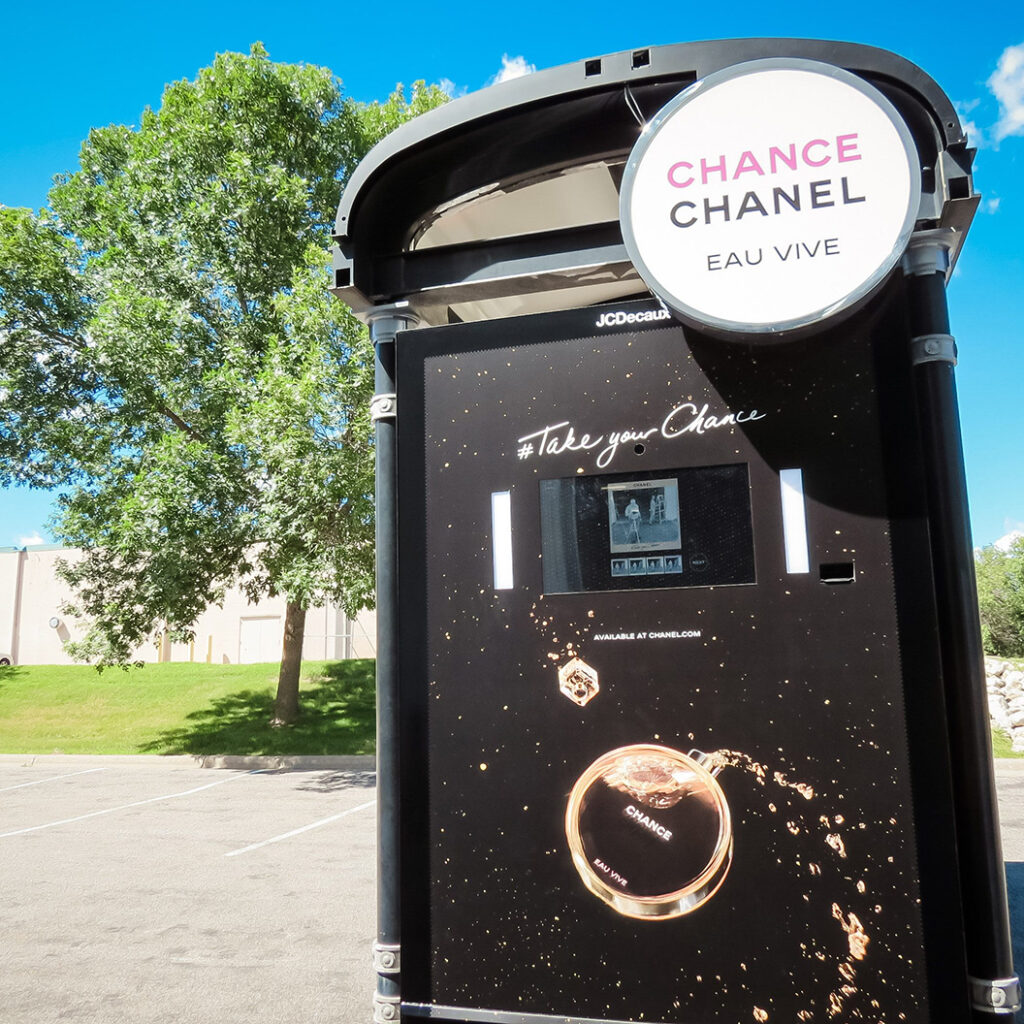
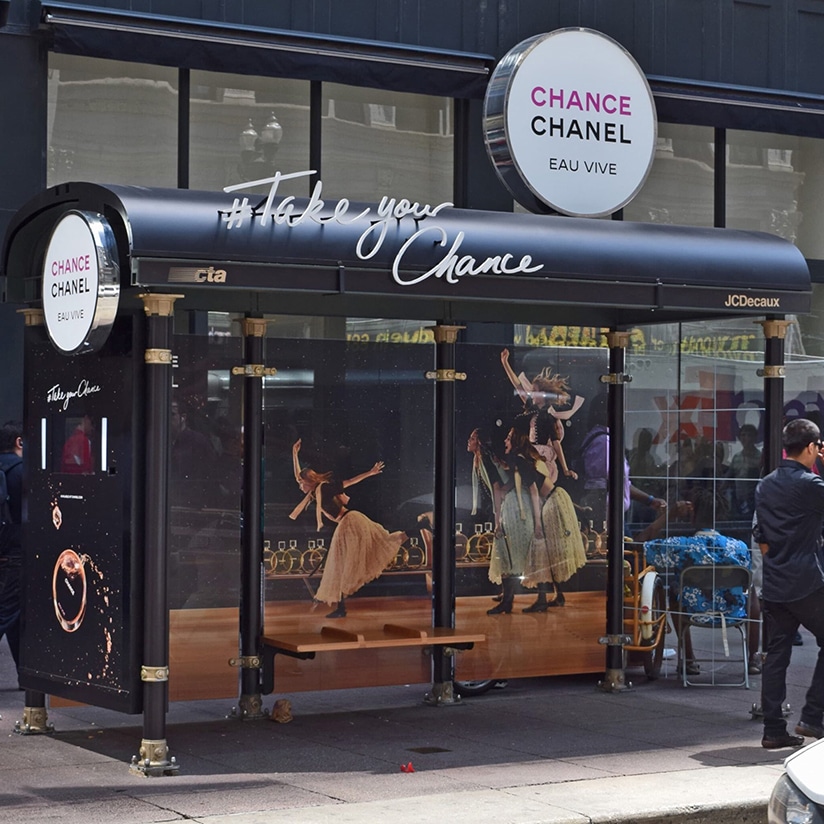
Luxury Meets Interactive Marketing
Chanel’s #TakeYourChance campaign elevated the typical transit shelter with elegant design and multiple interactive elements. These custom shelters featured dual screens—one playing Chanel commercials and another allowing passersby to create personalized GIFs. A perfume sample dispenser rewarded participation, combining digital engagement with product sampling. The installation also incorporated measurement technology to collect data on public engagement, demonstrating how street furniture can deliver both brand impact and valuable analytics.
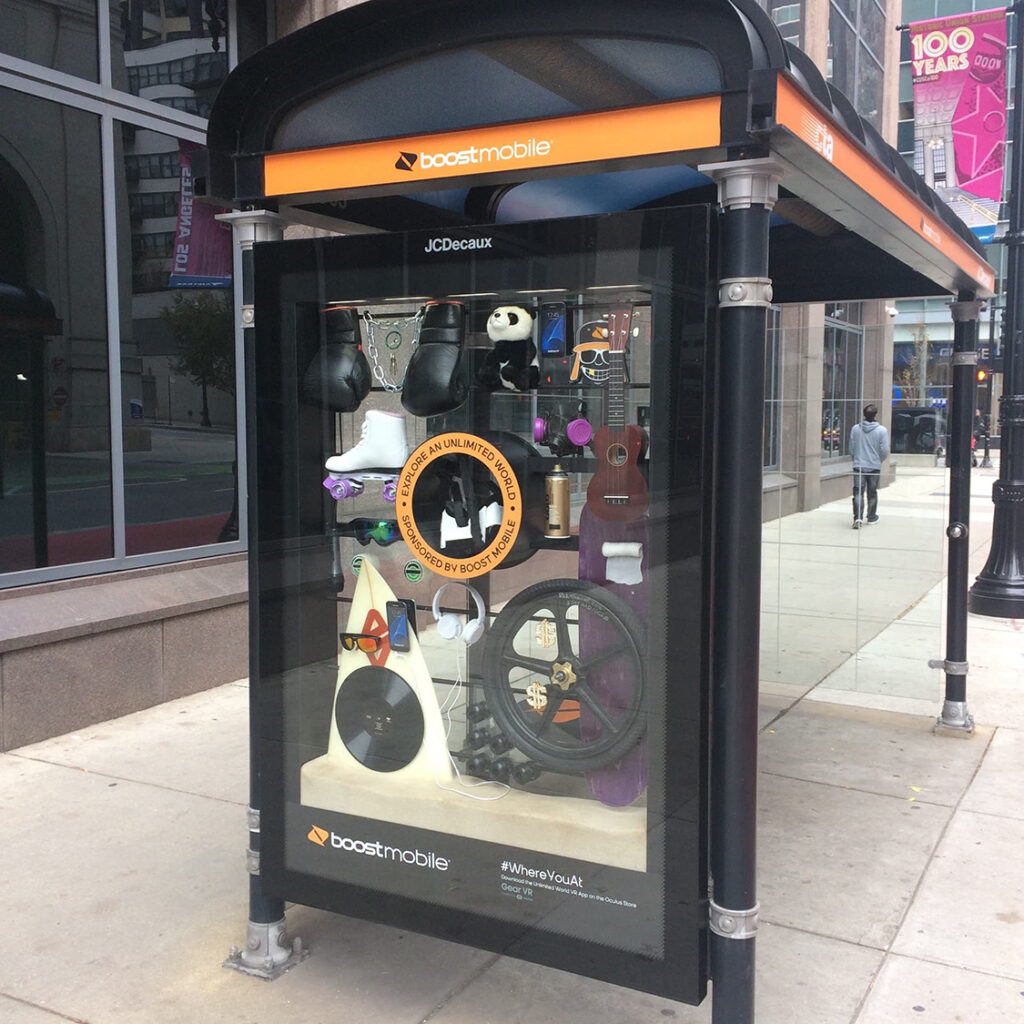
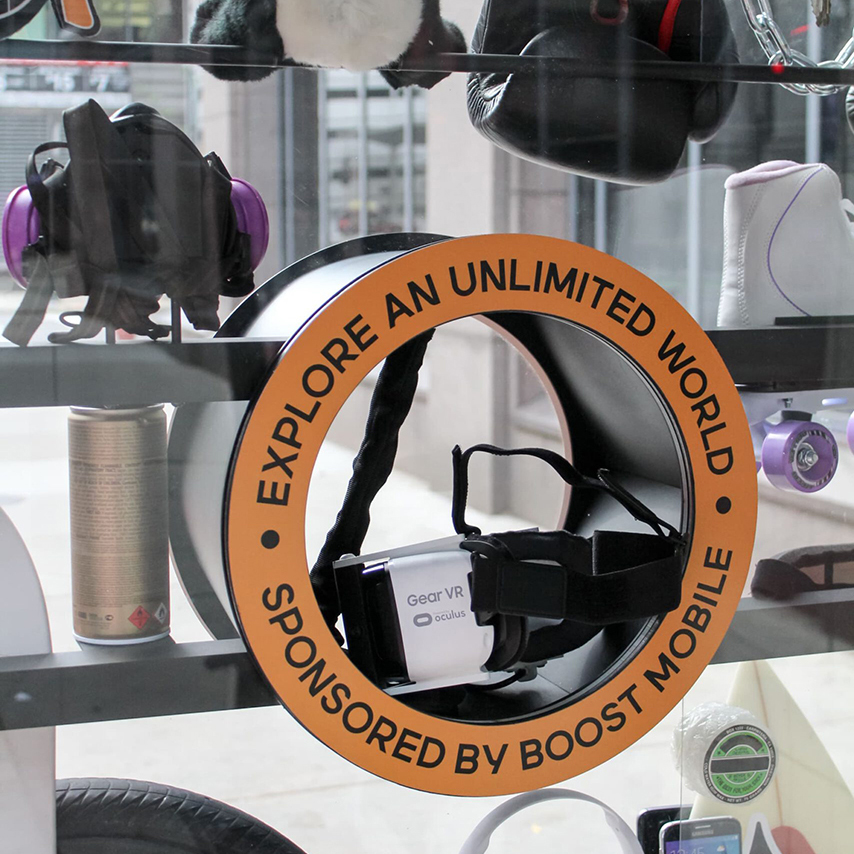
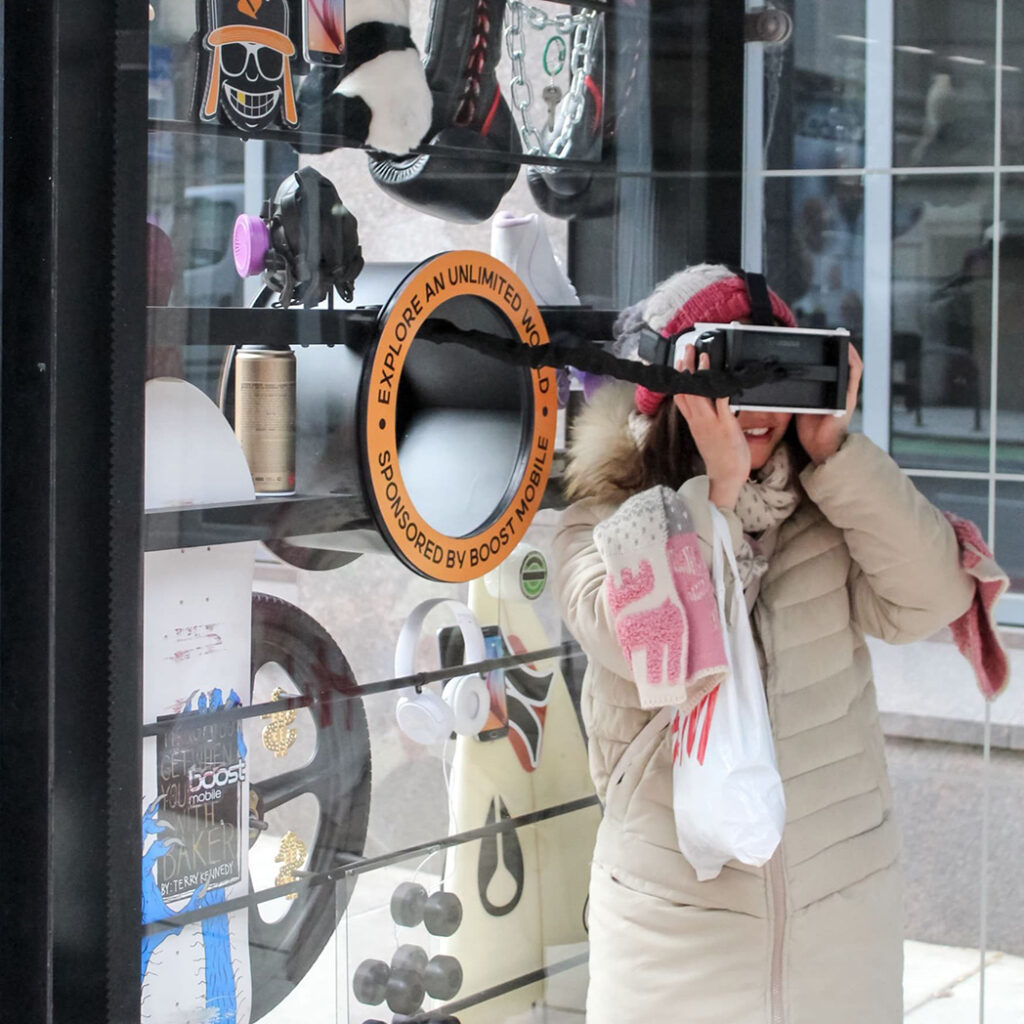
Experiential Product Demonstrations
Samsung and Boost Mobile demonstrated how street furniture can facilitate product trials in public spaces. Their innovative bus shelter design allowed pedestrians to experience virtual reality headsets firsthand. Engineers developed a custom security frame that prevented theft while still enabling an authentic VR experience. The shelter also displayed products used by brand ambassadors, creating a comprehensive brand story within a compact urban footprint.
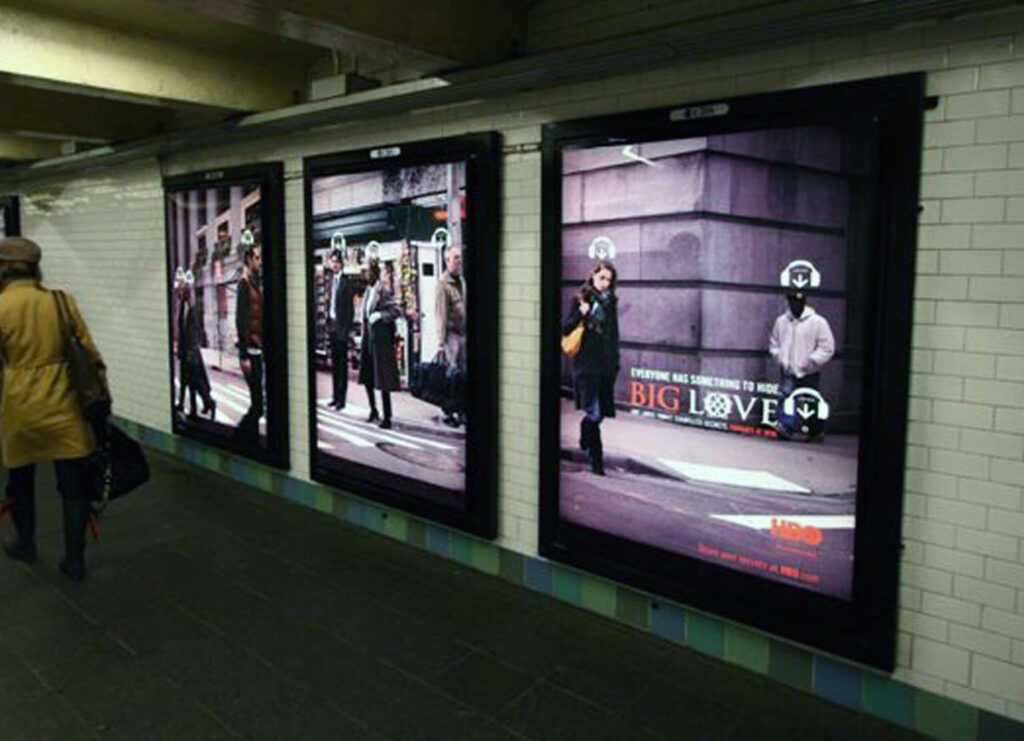
Entertainment and Engagement
HBO’s promotion for Big Love transformed subway installations into interactive audio experiences. Each backlit panel was equipped with multiple MP3 players connected to earphone jacks, allowing passersby to “plug in” and listen to the secret thoughts of characters displayed in the print advertisements. This creative use of audio technology turned passive viewing into an intimate, engaging experience.
The Advantages of Street Furniture for Brand Experiences
The increasing popularity of street furniture advertising stems from several key advantages that make it uniquely effective for creating urban brand experiences:
1. Eye-Level Engagement with Urban Audiences
Unlike towering billboards, street furniture meets consumers at eye level, creating a more intimate and natural interaction. This placement ensures maximum visibility and encourages deeper engagement with the brand message.
Street furniture advertising puts a brand’s message in front of a steady stream of potential customers throughout the day. Pedestrians, commuters, and shoppers all encounter these installations during natural pauses in their day—waiting for transportation, taking a rest, or looking for information.
2. Contextual Relevance in Urban Environments
Street furniture exists within the context of urban life, allowing advertisers to create messages that feel relevant to the surrounding environment. This means advertisements feel less intrusive and more like a natural part of the cityscape.
For example, Skrewball Peanut Butter Whiskey transformed a standard bus shelter into an immersive sensory experience with a massive 10-foot-long fiberglass bottle that appeared to pour whiskey into glowing shot glasses. The installation incorporated programmable chase lights that mimicked flowing liquid and, most impressively, custom scent technology that released the distinctive aroma of peanut butter whiskey into the surrounding area.
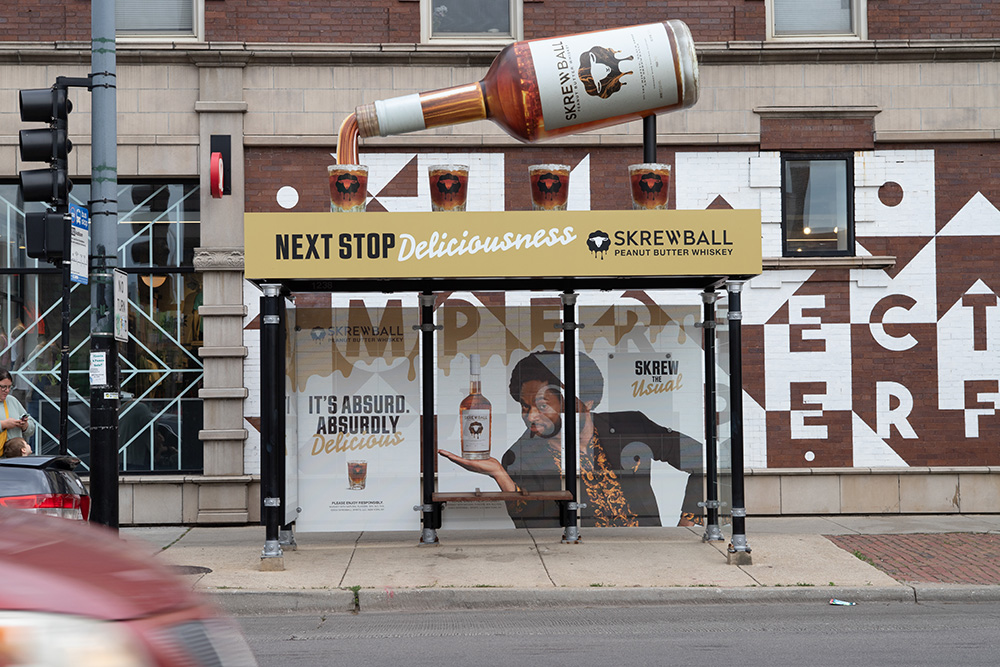
This multi-sensory approach created a memorable brand moment that engaged commuters through sight, light, and smell while providing shelter—turning a functional urban element into an unforgettable brand touchpoint. These contextually relevant experiences feel less like advertising and more like valuable additions to the urban experience.
3. Localized Targeting and Neighborhood Focus
One of the most powerful aspects of street furniture advertising is the ability to target specific neighborhoods and demographic groups with precision. Brands can customize messages for particular areas of a city, addressing local concerns or highlighting nearby store locations.
This localized marketing approach allows national brands to feel more relevant to local communities while providing small businesses an affordable way to target their immediate neighborhood. The ability to provide specific directions or highlight proximity—”Just two blocks away!”—makes street furniture particularly effective for driving foot traffic to retail locations.
4. Neighborhood Enhancement and Public Service
The most successful street furniture campaigns provide genuine value to urban communities beyond simple brand exposure. Installations that offer public services—free WiFi, weather protection, device charging, or community information—create goodwill and positive associations with sponsoring brands.
By enhancing public spaces rather than occupying them, brands demonstrate commitment to urban communities and create more meaningful connections. This approach transforms advertising from an intrusion into a welcome addition to the urban landscape.
Integrating Technology
The intersection of technology and street furniture has created new possibilities for experiential marketing in urban settings:
Interactive Elements and Mobile Integration
Interactive tech like touchscreens, motion sensors, and mobile connectivity make street furniture an engaging, participatory experience. QR codes and NFC technology (Near Field Communication) create connections between physical installations and digital content.
For example, brands have created bus shelter installations that react to pedestrian movement, panels that transform into games or photo booths, and benches that interact with mobile devices. When street furniture becomes smart and responsive, it turns everyday waiting into delightful brand moments.
Data Collection and Analytics
Street furniture installations can collect data on pedestrian traffic, engagement rates, and interaction patterns. This information helps brands optimize messaging and better understand urban movement patterns.
Facial recognition technology (with appropriate privacy considerations) can tailor content to demographic profiles, to provide relevant messaging for different audience segments. These analytics capabilities mean street furniture is now a sophisticated marketing channel with measurable ROI.
The Future of Street Furniture and Brand Experiences
As technology advances and urban environments continue to evolve, the future of street furniture as a platform for brand experiences looks increasingly sophisticated:
Augmented Reality Integration
The next frontier for street furniture advertising will likely include augmented reality experiences triggered by physical installations. A standard bus shelter could become a portal to an immersive brand world visible through smartphone cameras or AR glasses, creating limitless possibilities for storytelling and engagement.
Personalization at Scale
As data collection and real-time analytics improve, street furniture will offer increasingly personalized experiences that respond to individual preferences while maintaining privacy standards. Installations might recognize returning visitors (anonymously) and evolve content based on previous interactions, creating a sense of relationship between brand and consumer.
Urban Connectivity and Smart City Integration
As cities become “smarter” through integrated technology, street furniture will play a central role in urban connectivity. Brand-sponsored installations will help power urban data networks while providing services like environmental monitoring, emergency information, and community connectivity.
Conclusion
Street furniture has evolved from a simple advertising medium into a sophisticated platform for creating memorable brand experiences in urban environments. By combining localized advertising with creativity and technology, these everyday objects have become touchpoints for connecting with city residents in ways that resonate.
The street corner, bus stop, or park bench—once overlooked in marketing strategies—may now be the perfect canvas for your next breakthrough brand experience.
